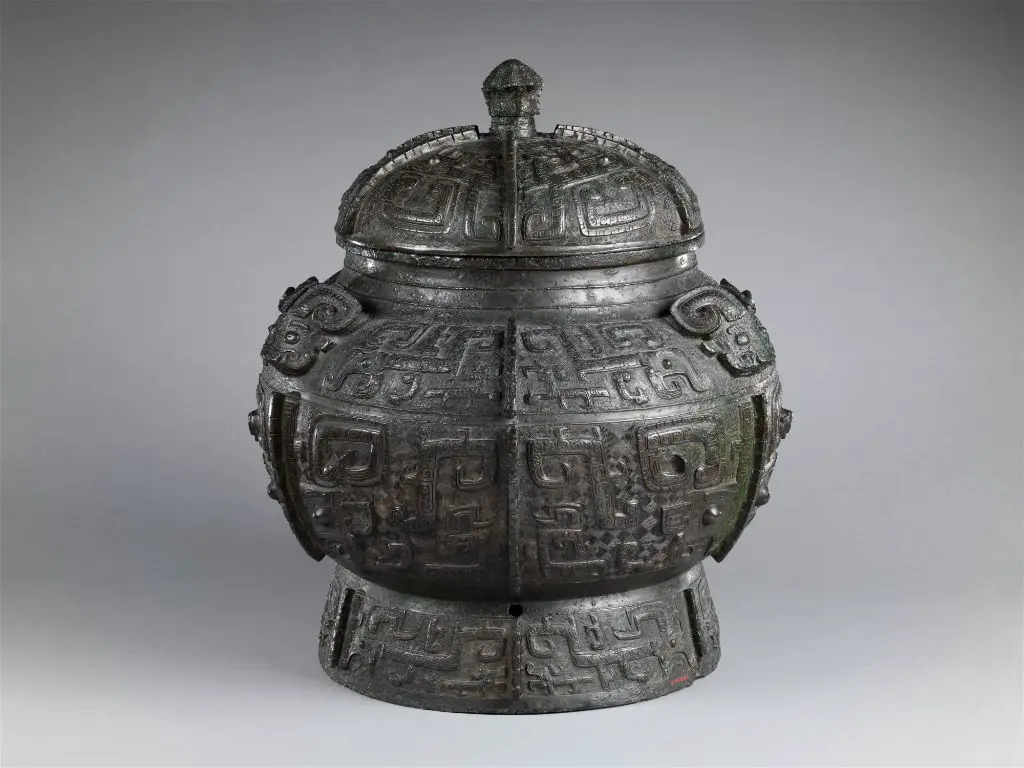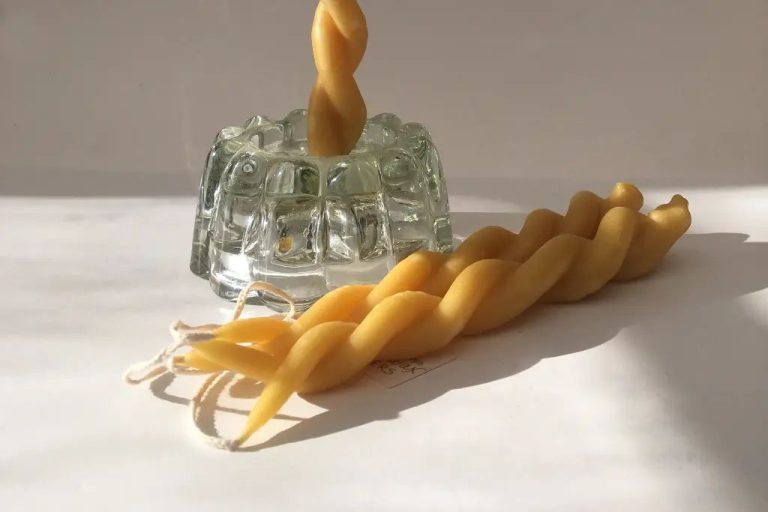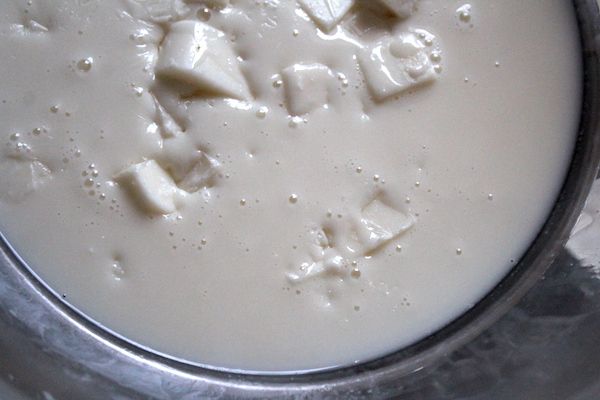What Is A Pouring Pot?
What is a Pouring Pot?
A pouring pot, also known as a ewer or jug, is a vessel used for storing and pouring liquids like wine, water, oil, etc. The origins of pouring pots can be traced back thousands of years to ancient civilizations like Mesopotamia, Egypt, Greece, Rome, China and medieval Europe.
Pouring pots are typically made from materials like ceramic, metal, glass or wood. They often have an elegant, decorative style with a handle, spout and lid. Functionally, the handle provides grip for pouring, while the spout allows liquid to flow out in a controlled stream.
Throughout history, pouring pots served essential purposes for storing, transporting and serving beverages. Their elegant forms made them centerpieces on dining tables as well. Early civilizations shaped clay by hand into pouring vessels, later throwing them on pottery wheels. Pouring pots evolved across cultures, taking on distinct regional styles.
Today, pouring pots are still widely used in daily life and special occasions. They come in a vast array of shapes, sizes and designs from minimalist to ornate. While materials and methods have modernized, the pouring pot’s timeless form persists as both a utilitarian and decorative object.

Types of Pouring Pots
Pouring pots come in many different shapes, sizes, and styles for various uses. Some common types of pouring pots include:
-
Coffee/Tea Pots – Used for pouring hot coffee, tea or other beverages. Often made of stainless steel, ceramic, glass or porcelain. May include features like insulated handles, strainers, and spouts for controlled pouring.
-
Gravy Boats – Designed for serving gravy, sauces or syrups. Typically ceramic or glass with a spout. Meant for table serving.
-
Creamers – Small pouring vessels for cream or milk to add to coffee or tea. Usually ceramic, glass, or silver. Some have lids.
-
Oil Cruets – Glass or clear plastic vessels with narrow pouring spouts, used for drizzling oil on salads, breads, etc. Often paired with vinegar cruets.
-
Syrup Pitchers – Used to serve pancake syrups, chocolate syrups, etc. Normally made of glass, plastic or ceramic for visibility of contents.
Pouring pots come in wide range of styles and designs for food and beverage service, from the elegant to the purely functional. They allow measured, drip-free pouring of liquids.
(Sources: https://www.saint-louis.com/en/collections/apollo/apollo-pouring-pot.html, https://lonestarcandlesupply.com/candle-making-equipment/pouring-pots/)
Materials
Pouring pots are made from a variety of materials, each with their pros and cons:
Clay
Clay is one of the oldest materials used for pouring pots. It has good heat retention properties and is easy to mold into various shapes and styles. However, clay is porous and can stain or absorb odors over time. Clay pots are also prone to cracking if exposed to extreme temperature changes.
Glass
Glass pouring pots allow you to see the contents inside and are non-porous so they won’t absorb stains or odors. Glass has a sleek, modern aesthetic. But it can crack or shatter if dropped and does not retain heat as well as other materials.
Metal
Stainless steel and other metals make very durable and sturdy pouring pots that conduct heat well. However, metal can discolor or corrode over time. Metal pots are also prone to denting if dropped or banged around.
Ceramic
Ceramic pouring pots provide excellent heat retention and come in a variety of decorative styles and glazes. But ceramic is brittle and can chip, crack, or break relatively easily. The glazes can also scratch or wear over time.
Plastic
Plastic pouring pots are inexpensive, lightweight, and sturdy. However, they do not retain heat well. Plastic is also not as aesthetically pleasing and can degrade over time, absorbing stains and odors. Higher quality plastics hold up better.
When selecting a pouring pot material, consider factors like aesthetics, durability, heat retention needs, and how the pot will be used and cleaned.
Decorative Styles
Pouring pots have been decorated in countless beautiful and ornate styles throughout history. Some of the most iconic decorative techniques include:
Enameling
Enameling involves fusing powdered glass to the surface of metal using high heat. It allows for incredibly detailed, colorful designs. Enameled pouring pots first emerged in the Middle East before spreading to Europe and Asia. Famous styles include Cloisonné from Asia and Champlevé from Europe.
Engraving
Engraving involves carving or etching designs into the pot’s surface. It results in sophisticated monochromatic patterns. Engraving developed across many ancient cultures for decorating metalware. Styles include circular geometric motifs from prehistoric Europe and delicate scrollwork from the Middle East.
Glazing
Glazing refers to coating the pot’s clay body with a glossy surface before firing. It can incorporate colors, patterns, and textures. Glazing originated in ancient Egypt, China, and the Middle East. Styles include China’s flamboyant sang-de-boeuf and Persia’s intricate minai ware.
Notable Pouring Pots
Pouring pots have a long, culturally significant history spanning centuries and continents. Here are some of the most notable antique and luxury pouring pots appreciated for their artistry and craftsmanship:
Ming Dynasty Bronze Wine Pot
This 15th century Chinese wine pot features intricate decorative relief and a elegant shape. Ming dynasty bronze wares are renowned for their innovative designs and expert metalworking techniques. This pot demonstrates the creativity and skill of artisans during the Ming era.
French Silver Coffee Pot
Dating back to the mid-18th century, this French silver coffee pot exemplifies the Rococo style popular during the reign of Louis XV. Featuring asymmetric scrolling shapes, delicate floral motifs, and a swan-shaped handle, this pot is a prime example of Rococo luxury silverwork.
Staffordshire Toby Jug
Originating in 18th century England, Staffordshire Toby Jugs are traditional ceramic pouring vessels shaped like human figures. This particular Toby Jug depicts a seated English gentleman holding a mug of beer. Toby Jugs like this are collectible folk art pieces.
ancient Greek Oinochoe Jug
Used for pouring wine in ancient Greece, this elegantly shaped terra cotta jug dates back to the 4th century BC. Painted with black-figure images of mythological figures, this oinochoe exemplifies Greek pottery artistry and craftsmanship during the Classical period.
Manufacturing Process
Pouring pots are created through a multi-step manufacturing process that involves designing, molding, firing, and finishing.
The process starts with the potter designing the shape and size of the pouring pot based on its intended use and aesthetic. Potters will often make sketches or prototypes from clay before creating the final mold.
Next, a two-piece plaster mold is created from the design. The mold has a top and bottom component that come together to form the shape of the pot. Liquid clay or “slip” is then poured into the mold and allowed to coat the interior surfaces.
Once the clay has achieved an even thickness along the mold walls, any excess slip is poured out. The top half of the mold is removed, allowing the clay pouring pot to be revealed. The potter may trim or smooth any imperfections on the pot before letting it fully air dry.
The dried pouring pot then goes through a bisque firing in a kiln, which hardens the clay. Next, the pouring pot may be decorated using colored glazes, paints, or other ornamentation methods. It is fired a second time to fuse the glazes and finishes.
After firing, some pouring pots may go through additional polishing or finishing steps. Handles or spouts can also be added at this stage. The completed pouring pot is then ready for packaging and sale.
Use Cases
Pouring pots have a variety of practical uses in the hospitality and dining industries. The key advantages of a pouring pot are its spout for controlled pouring and its handle for easy grip.
Tea and Coffee Service: In formal tea and coffee service, a hot water pot is used to brew tea, while a separate pouring pot is used to serve the beverage into cups or mugs. This allows for more elegant and controlled pouring. Some high-end tea sets include matched pouring pots specifically for serving tea neatly at the table.
Serving Gravy or Syrup: Pouring pots are commonly used in restaurants and diners to serve hot gravy, maple syrup, or other pourable condiments at the table. The handle provides good control while pouring and the spout directs the flow neatly over plates or pancakes.
Bar Service: Pouring pots can be used at bars to control the pouring of drinks like hot toddies or spiced wines. The handle protects the server’s hand from heat while the angled spout pours the liquid smoothly with precision.
Overall, the defining use case of a pouring pot is facilitating the graceful and tidy serving of flowing liquids in hospitality, dining, and drink service contexts.
Care and Maintenance
To properly care for your pouring pots to maximize their longevity and performance, you need to pay attention to cleaning, storage and preventing any chips or cracks. Here are some tips:
Cleaning: After using a pouring pot, wait for it to cool completely and wipe away any excess wax with a paper towel. Then use a small amount of rubbing alcohol on a paper towel or soft cloth to remove any remaining wax residue (source: https://support.candlescience.com/hc/en-us/articles/201351504-How-should-I-clean-my-pouring-pots-and-molds). Avoid using any soap or water, as this can damage the finish.
Storage: Store pouring pots in a dry, room temperature location away from direct sunlight when not in use. Place some cushioning material between pots to prevent chips and cracks if stacking.
Preventing Damage: Handle pouring pots gently, don’t drop them. When pouring hot wax, go slowly and carefully. Let the pots cool fully before cleaning or handling to prevent thermal shock cracks. Consider silicone sleeves to protect the exteriors while pouring hot wax.
Modern Innovations
Pouring pots have seen some exciting innovations in recent years when it comes to materials, designs, and features. Many companies are now using more sustainable and eco-friendly materials like biodegradable plastics, recycled materials, and plant-based resins (https://www.trendhunter.com/slideshow/innovative-planter-designs). These help reduce environmental impact compared to traditional plastic and ceramic pots.
New designs include self-watering pots, pots with reservoirs, and pots with built-in irrigation systems that help maintain optimal moisture levels for the plant (https://www.greenhousegrower.com/production/pots-trays/5-innovations-in-pots-and-trays/). Some companies have created modular pot systems that can be configured into unique shapes and patterns.
Other innovations include smart pots with sensors to monitor soil moisture and nutrient levels, adjustable pots that can expand as the plant grows, and pots with drainage filters and overflow catch trays. Overall, the pouring pot industry continues to innovate with new sustainable materials, water-saving designs, and high-tech features.
Notable Pouring Pot Companies
Some of the most well-known and reputable manufacturers of pouring pots include:
-
Le Creuset – Founded in 1925 in France, Le Creuset is known for its colorful, enamel-coated cast iron cookware including a variety of pouring pots. They are durable and distribute heat evenly (https://www.saint-louis.com/en/collections/apollo/apollo-pouring-pot.html).
-
All-Clad – This American company manufactures premium stainless steel cookware including large stock pots ideal for pouring. They offer excellent heat conductivity and durability (https://lonestarcandlesupply.com/pouring-pot-seamless-aluminum).
-
Cuisinart – Known for quality mid-range cookware, Cuisinart offers aluminum and stainless steel pouring pots with helper handles and drip-free pouring (https://www.saint-louis.com/en/collections/apollo/apollo-pouring-pot.html).
-
Tramontina – This Brazilian manufacturer provides commercial-grade, heavy-duty stainless steel stock pots perfect for pouring large quantities with ease and control.
-
Farberware – An affordable option, Farberware has classic stainless steel pouring pots with tight-fitting lids and helper handles for stability.
These major brands offer high-quality pouring pots in a range of materials, capacities, and price points to suit different needs.






